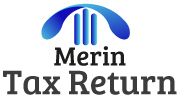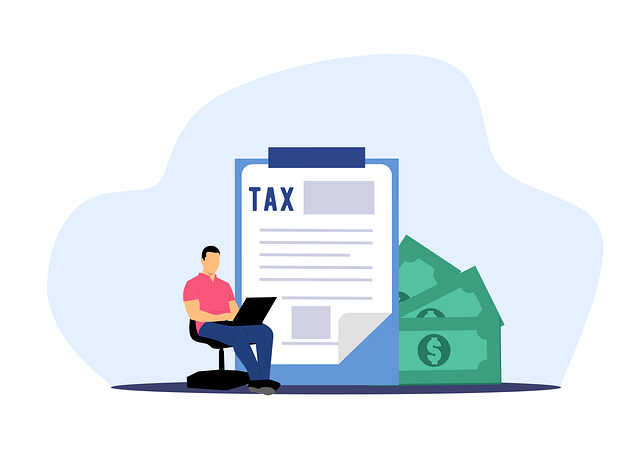A Complete Guide to Annual Tax Returns in the UK
Filing an annual tax return is a crucial responsibility for millions of individuals and businesses in the UK. Whether you’re self-employed, a company director, or have additional income streams, understanding the process is essential to ensure compliance with HM Revenue and Customs (HMRC) regulations. This guide will walk you through everything you need to know about annual tax returns in the UK, including who needs to file, key deadlines, how to complete your return, and tips to avoid common mistakes.
What is an Annual Tax Return?
An annual tax return, also known as a Self Assessment tax return, is a form submitted to HMRC to declare your income, gains, and other financial details for a specific tax year. The UK tax year runs from April 6 to April 5 of the following year. The information provided in your tax return helps HMRC calculate how much tax you owe or whether you’re due a refund.
Who Needs to File a Tax Return?
Not everyone in the UK is required to file a tax return. However, you must submit one if you fall into any of the following categories:
- Self-Employed Individuals: If you’re a sole trader or a partner in a business with an income of more than £1,000.
- Company Directors: Unless you’re a director of a non-profit organization and receive no income or benefits.
- High Earners: If your income exceeds £100,000.
- Landlords: If you earn rental income from property.
- Investors: If you have income from dividends, savings, or investments above certain thresholds.
- Foreign Income Earners: If you earn income from abroad.
- Capital Gains: If you’ve sold assets like property or shares and made a profit above the tax-free allowance.
- Additional Income: If you have other untaxed income, such as tips, commissions, or freelance work.
If you’re unsure whether you need to file a tax return, you can use HMRC’s online tool to check your status.
Key Deadlines for Filing Your Tax Return
Missing tax return deadlines can result in penalties, so it’s important to stay on top of these key dates:
- October 31 (Paper Returns): If you’re filing a paper tax return, it must be submitted by midnight on October 31 following the end of the tax year.
- January 31 (Online Returns): If you’re filing online, the deadline is midnight on January 31.
- January 31 (Payment Deadline): This is also the deadline for paying any tax you owe for the previous tax year.
- July 31 (Payment on Account): If you make advance payments towards your tax bill (known as Payments on Account), the second installment is due by July 31.
How to Register for Self Assessment
If you’ve never filed a tax return before, you’ll need to register for Self Assessment with HMRC. Here’s how:
- Online Registration: Visit the HMRC website and complete the online registration form. You’ll need your National Insurance number, personal details, and information about your income.
- Receive Your UTR: Once registered, HMRC will send you a Unique Taxpayer Reference (UTR) number. This is essential for filing your tax return.
- Set Up Your Online Account: Use your UTR to create an online account with HMRC, where you can file your return and manage your tax affairs.
How to Complete Your Tax Return
Filling out your tax return can seem daunting, but breaking it down into sections makes it more manageable. Here’s a step-by-step guide:
Step 1: Gather Your Documents
Before you start, ensure you have all the necessary documents, including:
- P60 or P45 forms
- Bank statements
- Invoices and receipts (if self-employed)
- Records of expenses
- Details of any other income (e.g., rental income, dividends)
Step 2: Log in to Your HMRC Account
Access your Self Assessment account on the HMRC website using your UTR and password.
Step 3: Fill in the Relevant Sections
The tax return is divided into sections, depending on your income sources. Common sections include:
- Employment Income: Details of your salary, benefits, and expenses.
- Self-Employment Income: Profit and loss figures for your business.
- Property Income: Rental income and allowable expenses.
- Capital Gains: Profits from selling assets.
- Foreign Income: Income earned outside the UK.
- Tax Reliefs and Allowances: Claims for deductions, such as pension contributions or charitable donations.
Step 4: Calculate Your Tax Liability
HMRC’s online system will automatically calculate how much tax you owe based on the information you provide. However, it’s a good idea to double-check the figures.
Step 5: Submit Your Return
Once you’ve completed all sections, review your return for accuracy and submit it online. You’ll receive a confirmation message once it’s been successfully filed.
Common Mistakes to Avoid
Filing a tax return can be complex, and mistakes can lead to penalties or delays. Here are some common errors to watch out for:
- Missing the Deadline: Late filing can result in an immediate £100 penalty.
- Incorrect Figures: Double-check all numbers to avoid discrepancies.
- Omitting Income: Ensure you declare all sources of income, including side hustles or freelance work.
- Failing to Claim Allowable Expenses: Many taxpayers miss out on claiming legitimate expenses, such as travel costs or office supplies.
- Not Keeping Records: HMRC may request evidence to support your claims, so keep all receipts and documents for at least six years.
Tips for a Stress-Free Tax Return
- Start Early: Don’t leave your tax return until the last minute. Starting early gives you time to gather documents and seek help if needed.
- Use Accounting Software: Tools like QuickBooks, Xero, or FreeAgent can simplify record-keeping and tax calculations.
- Seek Professional Help: If you’re unsure about any aspect of your tax return, consider hiring an accountant or tax advisor.
- Stay Organized: Keep all financial records in one place and update them regularly.
- Set Aside Money for Tax: If you’re self-employed, set aside a portion of your income to cover your tax bill.
What Happens After You File?
Once you’ve submitted your tax return, HMRC will process it and send you a statement of account. This will show:
- How much tax you owe
- Any payments you’ve already made
- Your payment deadline
If you’ve overpaid, HMRC will issue a refund. If you owe tax, you’ll need to pay by the January 31 deadline to avoid interest and penalties.
Penalties for Late Filing or Payment
HMRC takes deadlines seriously, and penalties can quickly add up:
- Late Filing: £100 fine immediately, with additional penalties if the return is more than three months late.
- Late Payment: Interest is charged on overdue amounts, plus potential penalties.
- Repeated Offenses: Higher penalties may apply for persistent late filing or payment.
Changes to the UK Tax System
The UK tax system is constantly evolving, and it’s important to stay informed about recent changes. For example:
- Making Tax Digital (MTD): HMRC is rolling out digital record-keeping requirements for businesses and landlords.
- Tax Thresholds: Income tax thresholds and allowances are adjusted annually, so check the latest rates.
- Brexit Implications: Changes to VAT and customs duties may affect businesses trading with the EU.
Frequently Asked Questions
Q1: Can I file my tax return on paper?
Yes, but the deadline for paper returns is earlier (October 31), and online filing is generally faster and more convenient.
Q2: What if I can’t pay my tax bill?
Contact HMRC as soon as possible to discuss a payment plan. Ignoring the issue will only lead to additional penalties.
Q3: Do I need an accountant?
While it’s not mandatory, an accountant can save you time and ensure your return is accurate, especially if you have complex finances.
Q4: Can I amend my tax return?
Yes, you can make changes to your return within 12 months of the filing deadline.
Conclusion
Filing an annual tax return in the UK doesn’t have to be stressful. By understanding the process, staying organized, and seeking help when needed, you can ensure compliance with HMRC regulations and avoid unnecessary penalties. Whether you’re self-employed, a landlord, or have multiple income streams, taking the time to complete your tax return accurately is an investment in your financial well-being.
This blog post provides a solid foundation, but you can expand it further by:
- Adding case studies or examples
- Including more detailed explanations of specific tax forms
- Discussing recent tax reforms in greater depth
- Providing links to HMRC resources or tools

